Members Join Forces Around Commitment to Improving Representation of Black Creatives in Design, Increasing Design Career Opportunities and Focusing on the Education Pipeline to Create Long Term and Lasting Change
Founding members include 2×4, Adobe, Architecture Plus Information, Aruliden, Civilization, COLLINS, Dropbox, Fossil Group, Freeman, fuseproject, Gap Inc., Herman Miller Group, Knoll Inc., Levi Strauss & Co, Pentagram, Stamen Design, Studio 0+A, Wolff Olins, and Work & Co
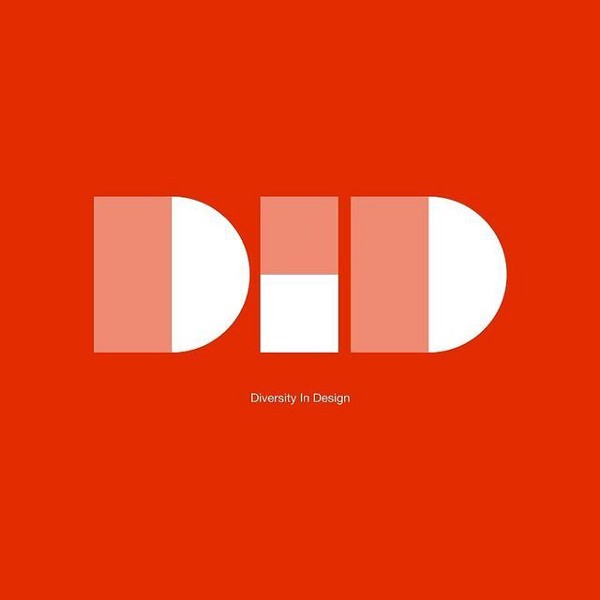
New York, NY (June 15, 2021) — Today, the Diversity in Design (DID) Collaborative, was launched by member organizations including 2×4, Adobe, Architecture Plus Information (A+I), Aruliden, Civilization, COLLINS, Dropbox, Fossil Group, Freeman, fuseproject, Gap Inc., Herman Miller Group, Knoll Inc., Levi Strauss & Co, Pentagram, Stamen Design, Studio 0+A, Wolff Olins, and Work & Co. Initiated by Herman Miller and its family of brands, the DID Collaborative is a group of companies united by a common belief in the critical role that diversity plays in creating strong, impactful businesses and innovations. DID has come together to create and foster systemic change in increasing diversity in design across fields, with the understanding that such change requires commitment, strategic action, and financial support.
DID’s central area of focus upon launch is to grow the network of members and to collaborate on projects that address the immediate issue of the lack of representation of Black creatives in design in the United States, increasing design career opportunities for Black youth through the building of industry awareness, knowledge, and connections that will form an educational pipeline that leads to full-time employment.
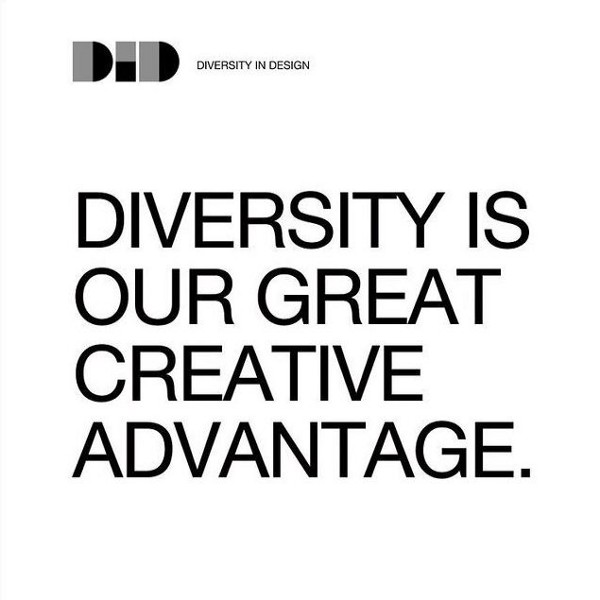
“At Herman Miller, design is core to who we are — we believe in its power to solve problems and make the world a better place. But the alarming data about diversity and representation in the industry has served as an urgent call to action for us to do better,” said Andi Owen, President and CEO of Herman Miller. “In our early stages of research on how to best address the underrepresentation of Black designers, it was immediately clear that we could not make substantial and lasting change alone. I’m excited for the launch of the DID Collaborative and eager to work alongside our fellow members to create meaningful change.”
DID was initially formed at Herman Miller and its family of brands, with Senior Vice President of Special Projects Mary Stevens and Caroline Baumann, former Director of Cooper Hewitt, Smithsonian Design Museum, co-leading the creation of the Collaborative, engaging key leaders and industries from across the world of design to form this initial group. An early group of Founding Advisors including D’Wayne Edwards, Founder, Pensole Design Academy, Lesley-Ann Noel, Associate Director for Design Thinking for and Social Impact, Tulane University, and Forest Young, Chief Creative Officer of Wolff Olins, helped to develop the Collaborative.
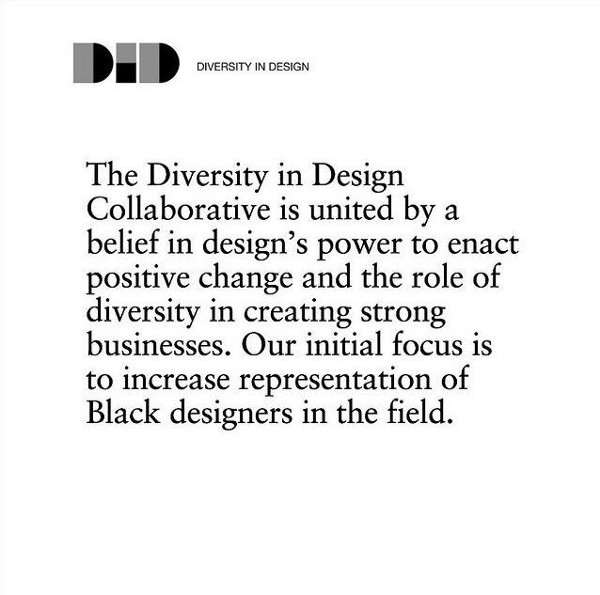
“Design is an agent of positive change. Good design requires successful collaboration. The members of DID, all companies with design at their core, are dedicated to making the systemic change necessary to transform the industry for good, moving the needle on the stark less than 5% that represents Brown and Black people in our industry. We, a Collaborative of authentically committed leaders united by design, are coming together to make that change,” said Caroline Baumann.
As the Collaborative launches, DID will focus on the immediate and pressing issue of a lack of representation for black creatives across design disciplines. 12% of the US labor force identifies as Black¹, while less than 5% of designers employed on a full-time basis identify as Black². The average Black student enrollment at design colleges and universities in the US is less than 10%³, and fewer than 10 of the 100+ HBCUs offer a design degree⁴.
“As a professor of design, who has not taught any Black students in the last two years, and only three students of color in total, I’m very excited about this initiative. Access is an issue that we all can work together to overcome by creating many pathways into design for students of color, rural students, students with disabilities, and students who are facing barriers to access to great design education. I look forward to seeing DID members supporting Black students as they pursue their careers in design, as well as the research and scholarship of the professors and institutions that support these students,” said Advisor Lesley-Ann Noel.
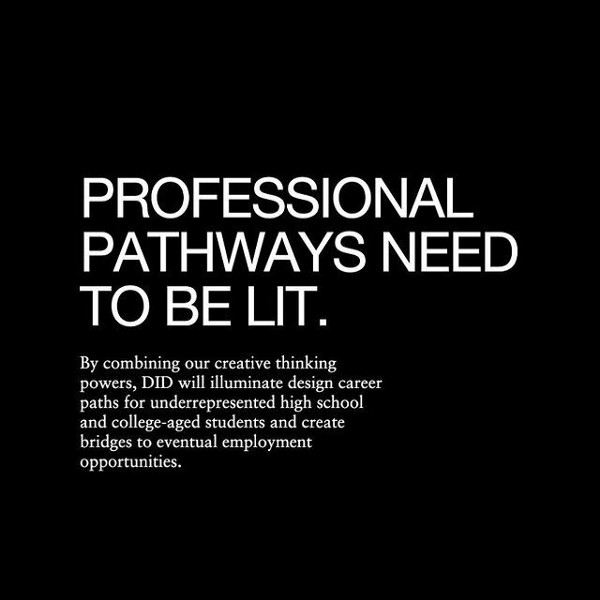
Member organizations will not only partner on existing initiatives in this space, but will join together to create new, joint partnerships and initiatives moving forward. This process will be guided by a director of the Collaborative as well as an ever-evolving council of advisors and experts in design, diversity, equity, and inclusion, with whom it will identify additional opportunities for joint action as the program and network evolves.
DID will work together to bolster design awareness and education at the middle school, high school, and college level with Historically Black Colleges and Universities (HBCUs), community colleges, higher learning programs and non-profit organizations that serve Black youth. The purpose of this work is to align these students with DID Collaborative initiatives to foster their educational journey into internships, apprenticeships, and on to part-time and full-time employment in the design field, ultimately creating a truly diverse field with an output of more inclusive solutions. Key to this will be a focus on ways to support professional development, retention and culture-building.
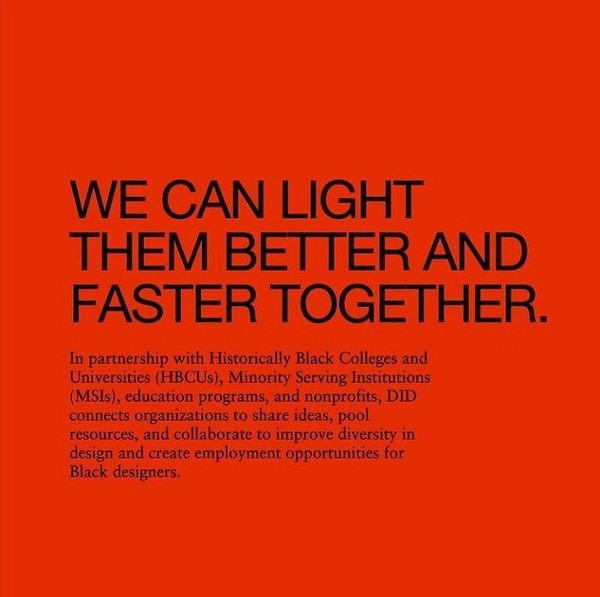
As the Collaborative begins work together, they are information-sharing on current DEI initiatives and opportunities and looking for areas of partnership, synergy, and potential, with working groups addressing the following two key tracks:
• Governance: DID members are determining key actions for alignment across all members, ensuring that members are establishing DEI practices and metrics of success within their own organizations in addition to Collaborative actions, abiding by a Code of Conduct and the requirements for membership.
• Creating opportunities: DID members are coming together to design and implement programming aimed to increase opportunity at various points along the educational and employment pipeline, including:
- Awareness & Activations: DID members are identifying and developing opportunities for collaboration to promote awareness and access for youth interested in design, encouraging and empowering them to pursue design as a career path. As a first step, the Collaborative has committed to working together on a DID Design Fair in Detroit in 2022, using this as a model for future fairs in other cities throughout the year.
- College Programs & Education: DID is committed to increasing opportunities for students who are exploring, or have chosen, design as their field of study, providing the space and access for them to gain experience, make connections, and thrive. For example, DID members are already beginning to work with advisor D’Wayne Edwards on ways to support a partnership between Pensole Academy and the College for Creative Studies that will launch in early 2022 in Detroit to create focused business and design education for Black college students. Many of the DID Collaborative companies will in turn partner with Pensole, CCS and other schools and HBCUs to prepare the students with the education, experience and skill sets to lead them to successful design careers.
• Recruitment & Retention: Both within their own organizations and through Collaborative undertakings, DID members will work together to provide increased opportunities for emerging designers in the field, focusing on internship, mentorship, and beyond to professional development and retention.
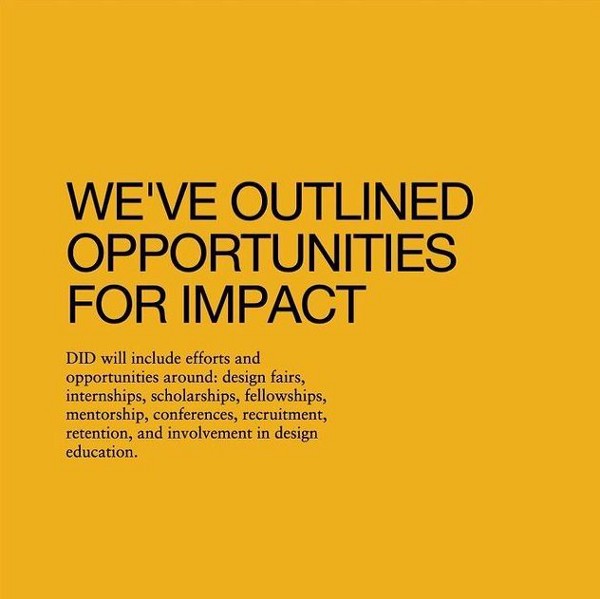
Driven by a strong belief in the power of design and through intentional collaboration, DID members will help shape future programs, and share in the design and implementation of a set of actions that will lead to substantive change in design education, laddering up to professional design practice.
“As a Black designer I have waited three decades to receive Herman Miller’s call proposing the concept of DID. The lack of diversity in design is too large an issue for one brand to try to solve itself. To me DID is about more than purposely creating more diversity in design, it is about an entire industry creating a more meaningful relationship with a consumer that goes beyond them being a consumer,” said Advisor D’Wayne Edwards.
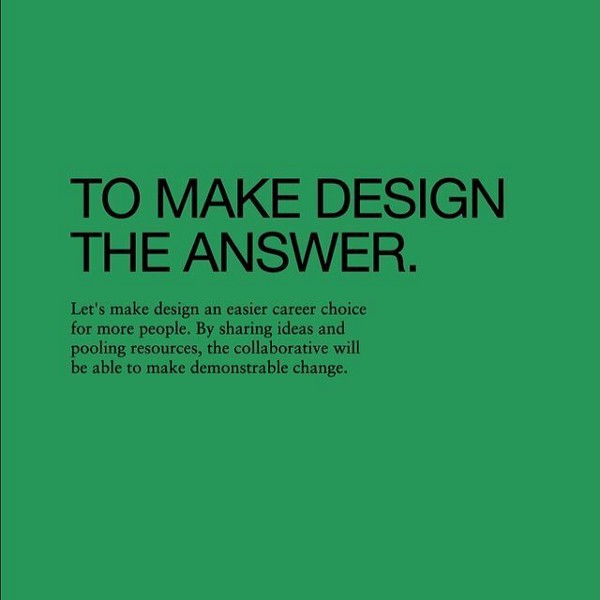
The DID logo, designed by Advisor, Forest Young, is conceived as a data visualization of this particular moment in time, and reflects the work to be done. His inspiration for the DID logo is, as he describes it, “a simple story of three squares and a circle. Our design profession is held captive by its relative homogeneity, interpreted here as a series of squares. It is only through the introduction of a circle, and its diversity of form, where the halves of the square and circle can meet to make letterforms legible. DID can be seen as prefiguring a new order. Differing opacity connotes uneven representation and serves to signal a perpetual ambition. In this sense, the mark is a charge: our profession will only become legible when diversity is re- lensed as a beacon of industry.”
The DID website strategy, design and development was done by Work & Co.
With the announcement of the birth of the DID Collaborative, the founding members invite other companies with design at their core to learn more and join the conversation by visiting www.diversityindesign.com.
Diversity in Design Collaborative Founding Members:
- 2×4
- Adobe
- Architecture Plus Information (A+I)
- Aruliden
- Camron
- Civilization
- COLLINS
- Dropbox
- Fossil Group
- Freeman
- fuseproject
- Gap, Inc.
- Herman Miller Group
- Knoll, Inc.
- Levi Strauss & Co
- Pentagram
- Stamen Design
- Studio 0+A
- Wolff Olins
- Work & Co
Diversity in Design Collaborative Co-Leads
- Caroline Baumann, Design Leader
- Mary Stevens, Senior Vice President of Special Projects, Herman Miller
Diversity in Design Collaborative Advisory Founding Advisory Council:
- D’Wayne Edwards, Founder, Pensole Design Academy and Pensole Lewis College of Business & Design
- Lesley-Ann Noel, Associate Director for Design Thinking for Social Impact, Tulane University
- Forest Young, Chief Creative Officer, Wolff Olins
For additional information, please contact:
- Morgan Potts, Camron PR, morgan.potts@camronpr.com
[1] Statistic derived from 2017 US Census Bureau, ACS PUMS 1-Year Estimate. (The American Community Survey (ACS) Public Use Microdata Sample (PUMS) files are a set of un-tabulated records about individual people or housing units. The Census Bureau produces the PUMS files so that data users can create custom tables that are not available through pre-tabulated (or Summary) ACS data products.)
[2] Statistic derived from 2018 The US Census Bureau, ACS PUMS 1-Year Estimate. Statistic comprises those who listed their profession as: commercial and industrial designers, graphic designers, interior designers, landscape architects, other designers, urban & regional planners, web and digital interface designers, architects (except naval), or designers.
[3] Per a 2018 review of design colleges and universities by D’Wayne Edwards / Pensole Academy
[4] Per a 2020 review of HBCUs by D’Wayne Edwards / Pensole Academy
